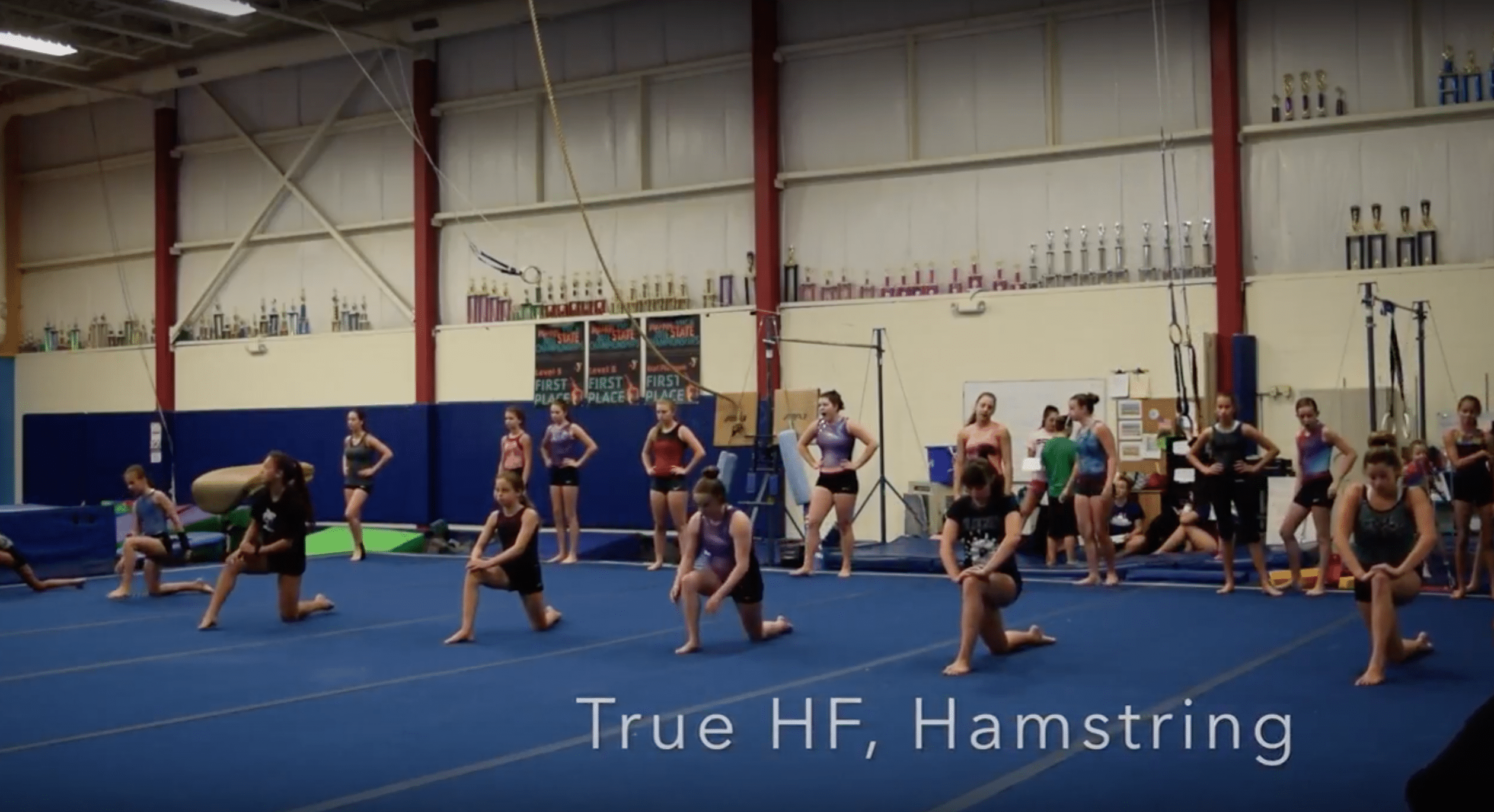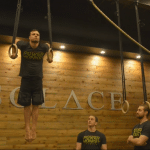3 Things That Must Go In A Gymnast’s Warm Up
As I continue to learn and think more, I’m always looking to tweak our gymnastics practices in an effort to help our athletes as much as possible. The warm up is one of the most essential parts of practice, as it helps prepare the body for the training load and the process of motor skill development. Not only is there some great research thoughts on injury patterns being linked to improper warm ups, but a proper warm up also helps to maximize the time spent in the gym. Here is a 40 second video showing each of these things, then a quick note on each below.
- Soft Tissue Prep – It’s incredibly important that gymnasts are preparing their soft tissues for their training. A pet peeve I share with my friend Brian Pickard is when gymnasts come into practice, then immediately dive into running on the floor and dynamic movement. We haven’t done anything to prep the soft tissue or nervous system with a gradual ramp up. This especially the calves and under arm soft tissue that tend to be very stiff on gymnasts. . The verdict is still out on what exactly is going on with self soft tissue work (find some great review research here and here) with possible mechanisms ranging from increased blood flow, fluid shifting, decreased nociceptor sensitization, reduction in muscle tone, and changes in perceived soreness. Recent literature has moved away from theories of it breaking up scar tissue adhesions or deforming fascia, as that likely requires quite a bit of force (read more here, here, and here). For whatever reason, all of the gymnasts on our team and that I work with tend to feel better and move better when putting time towards soft tissue work. I tell our girls to come in 10 minutes before practice and go head to toe, spending more time on something that may be sore or stiff. That way, we still have a full 30 minutes of the warm up for dynamic stretch and so forth.
- Double Leg and Single Leg Landing Technique – This is crucial. Remember our bodies and nervous system hang on to movement patterns we use and practice regularly. Gymnasts land thousands of times per month, and Dr. Sand’s research has suggested the force that go through their bodies are incredibly high. If they do not know how to absorb and disperse these forces properly, it can lead to increased injury and reduced ability to stick skills in routines. This is 3 of the most important minutes of your gymnast’s practice, making sure they know how to land properly on two legs and one. I make our gymnasts do 5 squats, 5 toe-ball-heel landings if appropriate, 5 jump squats, and 5 single leg runner drills to single leg landings on both sides every single day. They are focusing on proper landing technique, which you can read more about it in this popular article I wrote “Why Gymnasts Must Change How They Land“.
- Skill Basics That Apply Movement Concepts – Every great coach and gymnast knows basics are really where the magic is. Without good basics and technique, it’s hard to progress to advanced skills. Just like with landing basics, we must practice them every day. As you can see in the video above, note every gymnast is perfect but we are getting there. I think it is very important these gymnastics basics integrate movement basics that will help them perform better and reduce injury risk. Once example like shown above is doing simple back handspring step outs before we went to beam, making sure the shoulders and hips dominate the movement around a braced controlled core. This is important for proper beam flight and performance aspects, but also to make sure that the gymnast understands how to protect their spine against overload during the 100’s of hyper extension reps they will be doing in a week of practice. Whatever the event of basic focus, make sure in the end of a warm up you are building in these concepts.
Everyone’s warm up is different, these are just some of my thoughts to add! Best of luck,
Dave Tilley DPT, SCS





